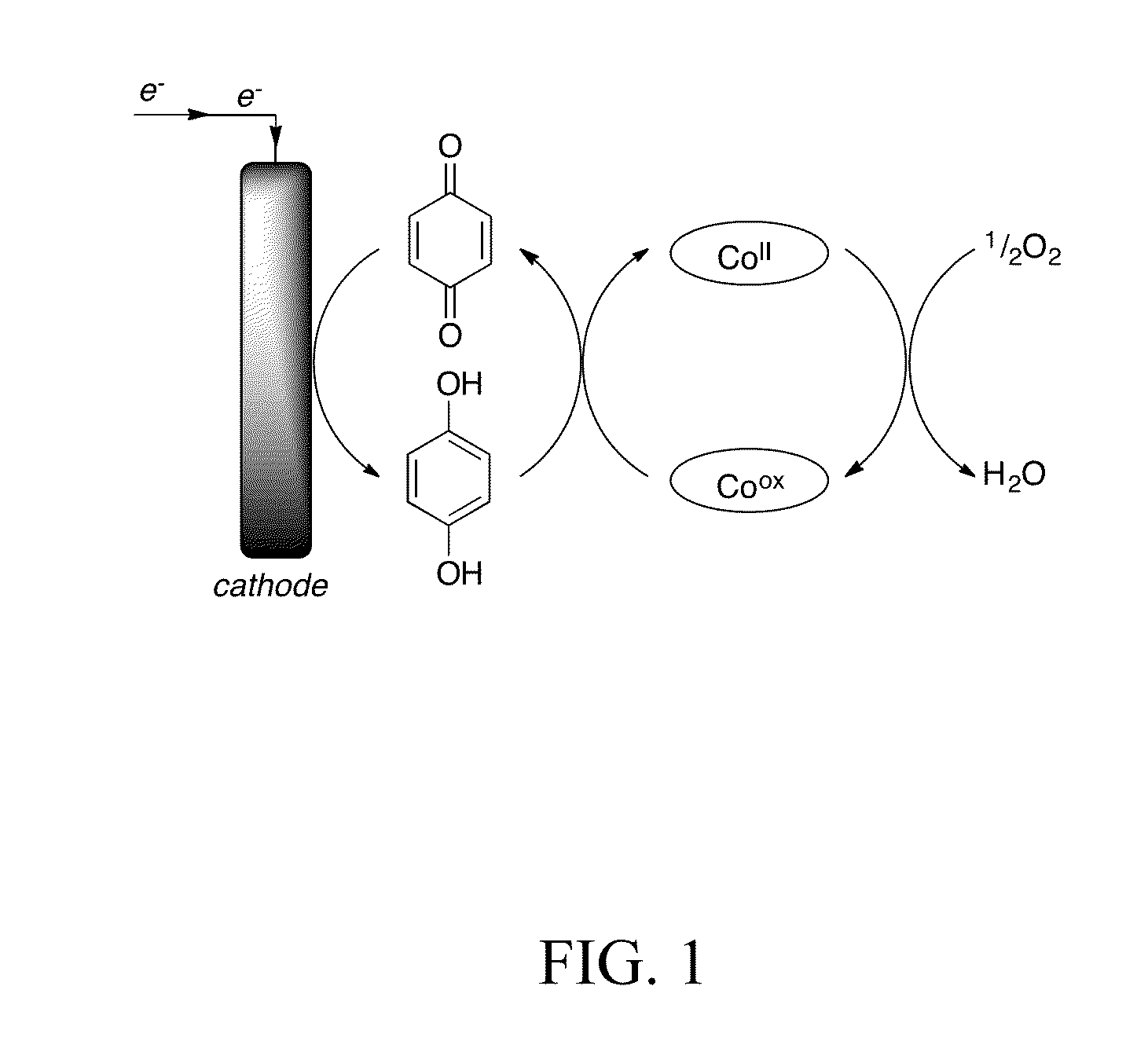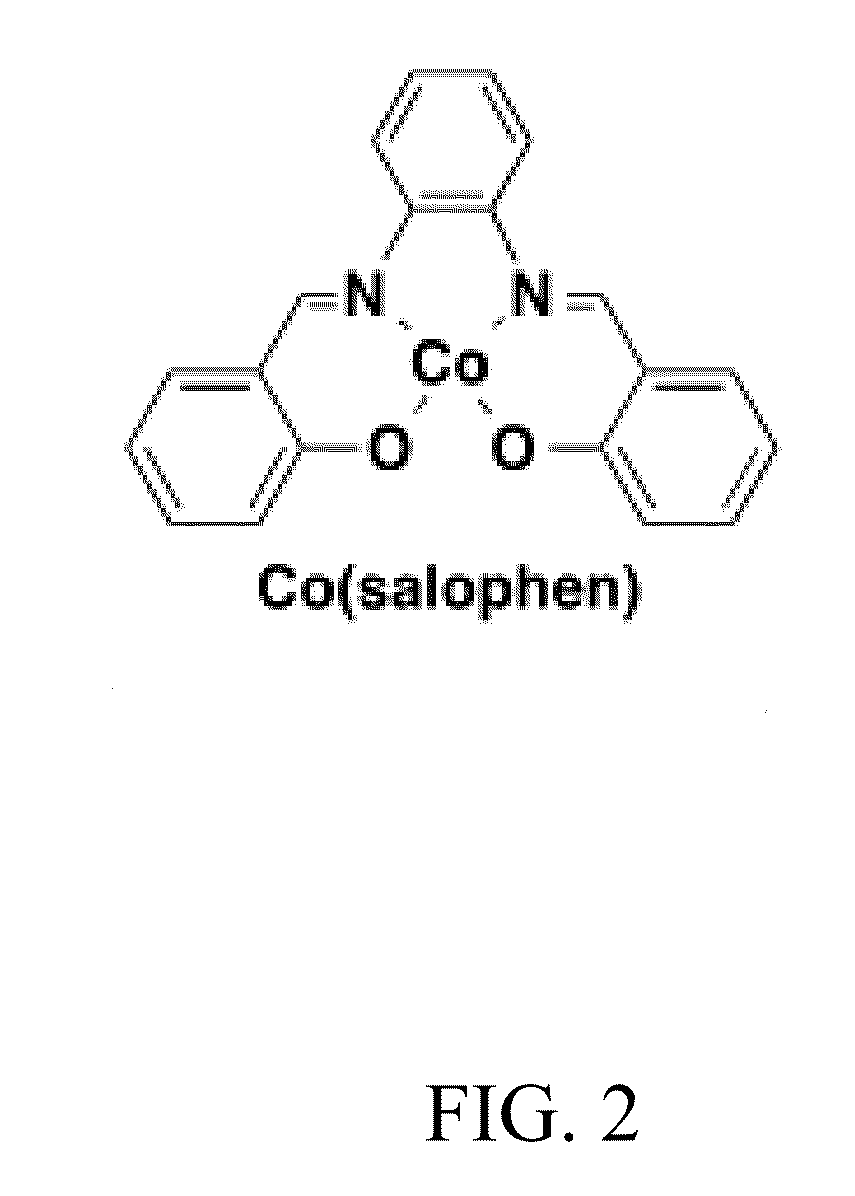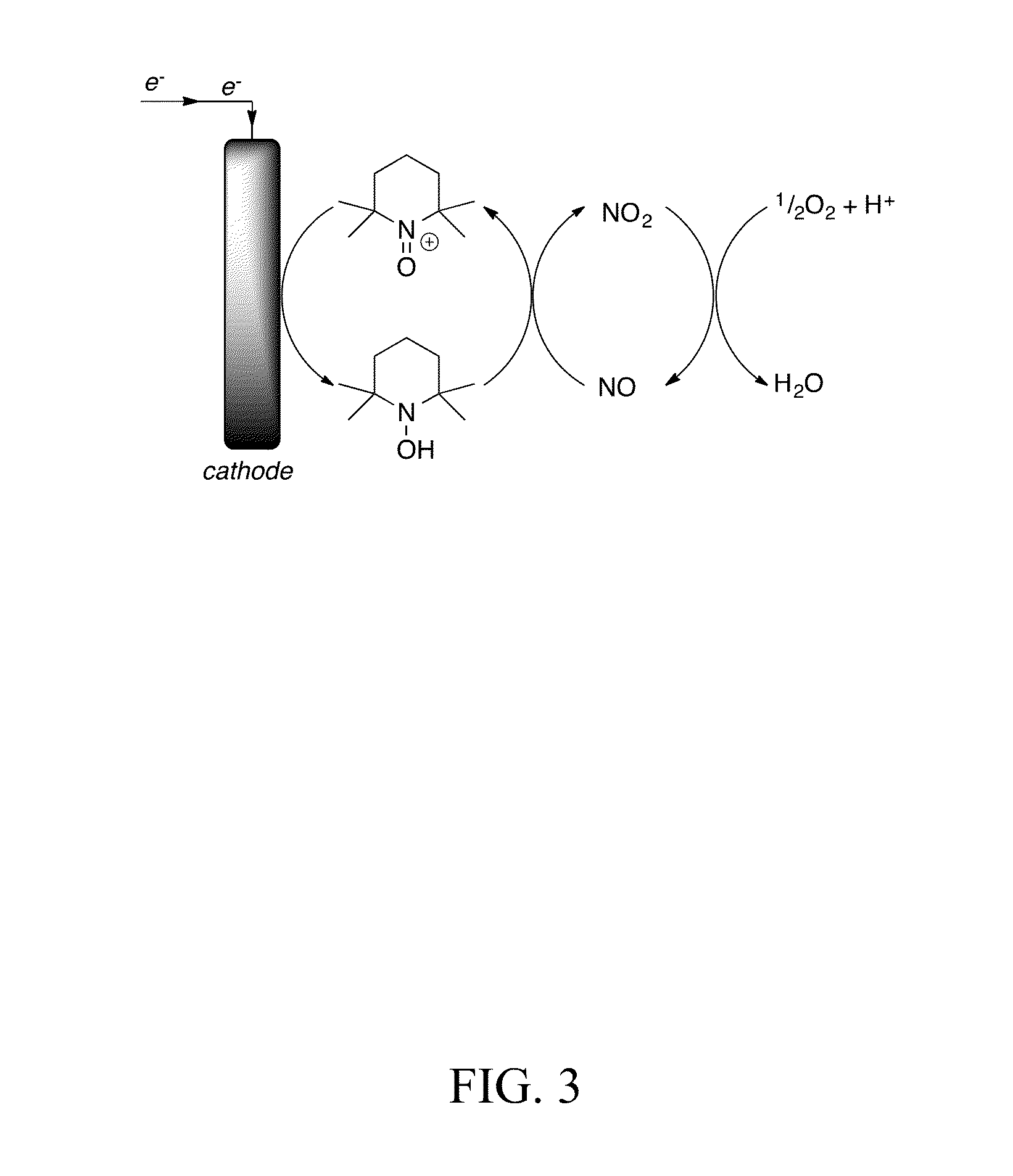Charge Transfer Mediator Based Systems for Electrocatalytic Oxygen Reduction
a technology of electrocatalytic oxygen reduction and charge transfer mediator, which is applied in the direction of indirect fuel cells, instruments, cell components, etc., can solve the problem of high cost of cathodes
- Summary
- Abstract
- Description
- Claims
- Application Information
AI Technical Summary
Benefits of technology
Problems solved by technology
Method used
Image
Examples
example 1
Benzoquinone / Hydroquinone as a Redox Mediator with a Soluble Catalyst
[0053]FIG. 1 depicts use of a quinone in connection with our invention. We paired this with a cobalt based redox catalyst, the compound Co(salophen) depicted in FIG. 2.
[0054]In one example, we focused on the solvent combination of N,N-dimethylformamide (DMF) with 0.15-0.2 M AcOH. Cyclic voltammetry was used to probe the feasibility of electrocatalytic O2 reduction using this system. Initial control tests with benzoquinone under N2 and O2 or catalyst under N2 and O2 were also conducted to determine the behavior of each component on its own.
[0055]The behavior of benzoquinone under O2 and N2 was nearly identical with the reduction of benzoquinone to hydroquinone observed at −0.80 V (all potentials vs. Fc / Fc+) and the oxidation of hydroquinone to benzoquinone observed at −0.19 V. The onset of the wave due to direct reduction of O2 by cobalt and acid was not observed until approximately −0.90 V, 460 mV more reducing tha...
example 2
Benzoquinone / Hydroquinone as a Redox Mediator with a Heterogeneous Catalyst
[0061]We next tested a system where heterogeneous platinum supported on aluminum oxide pellets was the oxidizer and hydroquinone was subject to oxidation and reduction (see FIG. 4). Cyclic voltammetry (CV) measurements were performed at a glassy carbon electrode that was polished with alumina before each experiment. An Ag / AgCl reference electrode and Pt wire counter-electrode were also used. All potentials are reported relative to NHE.
[0062]In one example we used a glassy carbon electrode in 10 mM hydroquinone in water, with 1 M H2SO4 supporting electrolyte. Oxidation and reduction peaks corresponding to formation and consumption of benzoquinone were observed with an E1 / 2 of 682 mV (see FIG. 5).
[0063]In another example, we tried 10 mM 2′,5′-dihydroxyacetophenone in water, with 1 M H2SO4 supporting electrolyte. It was poorly soluble, but oxidation and reduction peaks were observed with an E1 / 2 of 777 mV. This ...
example 3
[0069]We next tested a nitroxyl system where nitrogen oxide was the oxidizer and a nitroxyl was subject to oxidation and reduction (see FIG. 3). Cyclic voltammetry (CV) measurements were performed at a glassy carbon electrode that was polished with alumina before each experiment. An Ag / Ag+ reference electrode and Pt wire counter-electrode were also used. At the end of each experiment, ferrocene was added to the solution and a CV scan was taken to determine the ferrocene / ferricinium potential relative to the reference electrode. All potentials were reported relative to ferrocene.
[0070]We then tested the nitroxyl compound (CH2)3(CMe2)2NO, a / k / a “TEMPO” (see FIG. 3), as the mediator.
[0071]CV measurements of TEMPO in CH3CN showed a reversible nitroxyl / oxoammonium process (E1 / 2=235 mV). The variation in peak currents with scan rate support the conclusion that oxidation and reduction take place on species in solution. Addition of acetic acid leads to disproport...
PUM
| Property | Measurement | Unit |
|---|---|---|
| time | aaaaa | aaaaa |
| pH | aaaaa | aaaaa |
| charge | aaaaa | aaaaa |
Abstract
Description
Claims
Application Information
 Login to View More
Login to View More - R&D
- Intellectual Property
- Life Sciences
- Materials
- Tech Scout
- Unparalleled Data Quality
- Higher Quality Content
- 60% Fewer Hallucinations
Browse by: Latest US Patents, China's latest patents, Technical Efficacy Thesaurus, Application Domain, Technology Topic, Popular Technical Reports.
© 2025 PatSnap. All rights reserved.Legal|Privacy policy|Modern Slavery Act Transparency Statement|Sitemap|About US| Contact US: help@patsnap.com



